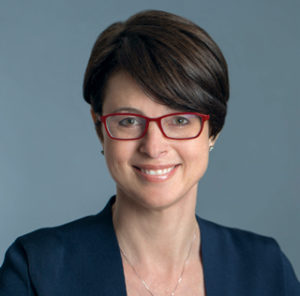
Long-term care providers wary of extra scrutiny should also be prepared for new opportunities in an administration that will likely expand insurance coverage and embrace innovative care models that could reshape the referral process.
That was one of several takeaways from Wednesday’s NIC Leadership huddle featuring post-acute care policy experts Dan Mendelson, founder of Avalere Health, and Anne Tumlinson, the CEO and founder of ATI Advisory.
Both encouraged skilled nursing operators to embrace care models that have been growing in popularity among consumers and major health plans since the Obama administration. For example, primary care physician incentive programs could be a boon to facilities fighting to maintain market share as funding continues to shift toward home and community-based care.
Under PCP plans, Mendelson explained, major insurers siphon off high-risk Medicare Advantage patient groups, such as those with end-stage renal failure, to private companies that get rewarded for efficient care.
“Skilled nursing facilities and assisted living providers will see more and more of these patients inside their walls and will have to figure out how to get paid through these new entities,” Mendelson said. “All of them need to provide post-acute care … If you’re not getting referrals from them, someone else is.”
New pay sources, higher census?
Tumlinson echoed the exhortation to work within a framework of shifting risk and evolving coverage types offered through Medicare, Medicaid or healthcare exchanges under the Affordable Care Act. Skilled nursing providers, she said, have a skill set that new entities need, which could lead to new revenue sources and higher occupancy.

“This is a huge opportunity, unless you don’t do anything about it, and then it’s a huge threat,” Tumlinson said. “You are not going to them begging. Their survival depends on you … If you can offer scale, they’ll see the value.”
Key to succeeding: robust data, the ability to demonstrate value with potential partners and a willingness to anticipate local and national market changes and find new referral sources.
Align now to keep money flowing
Tumlinson predicted the new administration would spring fewer surprises on the healthcare industry over the next four years than the Trump administration. The Biden team has already broadcast its intent to focus early on the pandemic, improve access to care and coverage, and eliminate health disparities.
“The (post-acute) sector, if it wants funds to flow in, it needs to align with those priorities,” Mendelson added.
In addition to Biden’s first-week emphasis on ramping up vaccinations and a new COVID relief package aimed at individuals, Tumlinson reported the administration is already working on a second COVID relief bill that would shore up highly affected industries, including healthcare.
Mendelson said he would tell anyone investing in post-acute care to “strap on their seatbelts because there’s going to be a lot of activity coming.”
He warned that continued focus on the pandemic and the economy — including the administration’s aspirational but “not realistic” push for a $15 hourly minimum wage — could distract providers from anticipating bad news on the payment front.
“We’re in a reconciliation mode,” he said. “There’s going to be an all-out hunt for cost cuts or offsets. There’s going to be a discussion of rate (cuts) that I don’t think anyone is talking about right now.”



